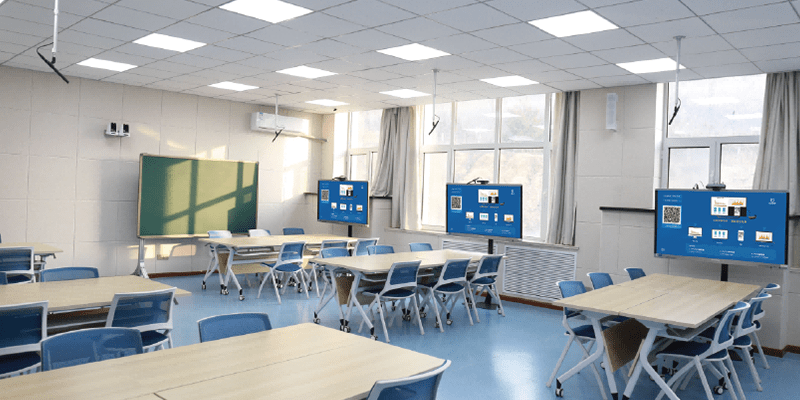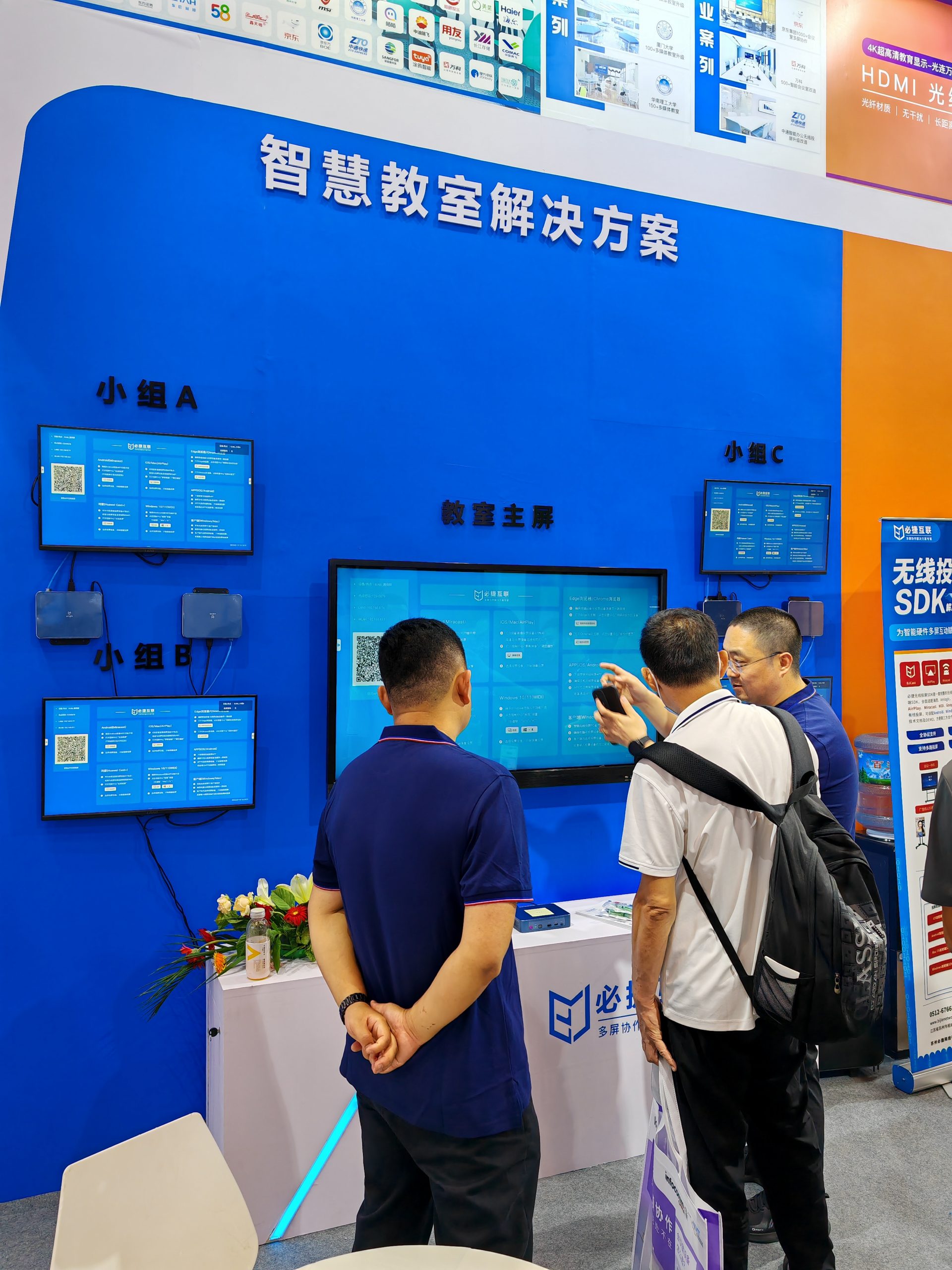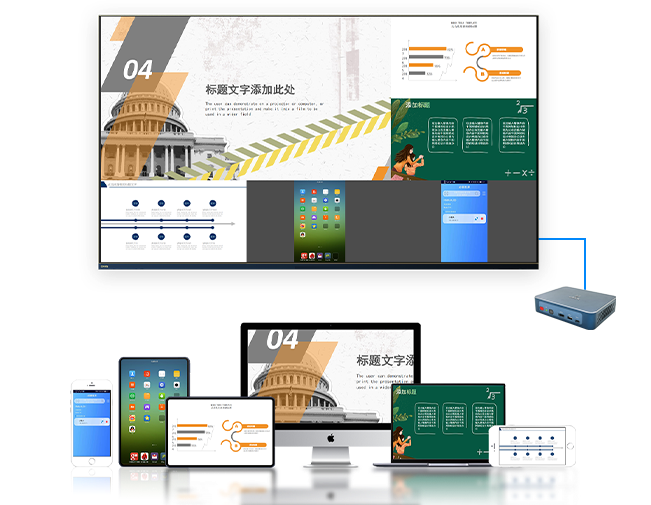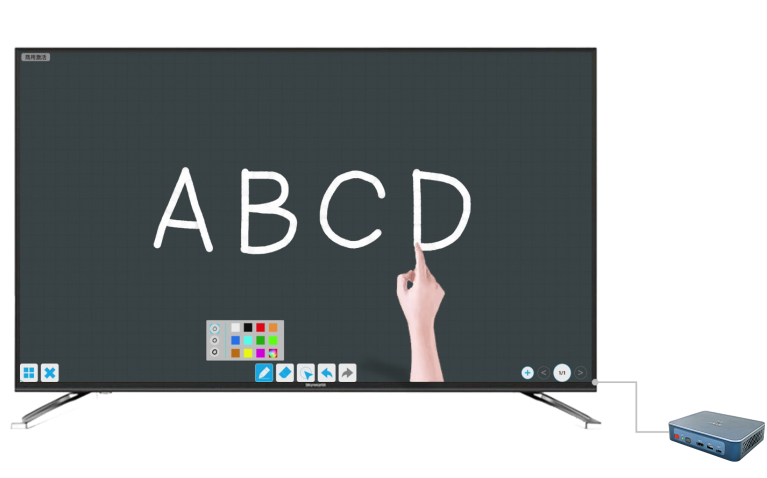Interactive Classroom – The Teaching Function of Bijie Interactive Classroom Solution
The rapid development of information technology has prompted educators to apply mobile information technology to teaching, introduce multi screen interactive teaching platforms, and organize interactive teaching activities. For example, multi screen interaction between teachers and students’ mobile phones and computers has become an indispensable function of smart multimedia classrooms.

Multi screen interaction mainly provides functions such as real-time transmission of screen images, transmission of audio and video data, and multi screen control. During teaching, the teacher’s computer can achieve same screen teaching with the student’s electronic pad, one click projection, handwritten annotations, collaborative homework, and loop playback of teaching content to adapt to teaching modes such as teacher-student interaction and group discussions. Teachers can break free from the constraints of the podium, making teaching methods more flexible and efficient.

In response to the above issues, Bijie Internet adopts a multi screen collaborative smart classroom solution to create a group discussion smart classroom scene for vocational colleges. It adopts a solution of display devices+IP networking+intelligent terminal devices (BJ66 interactive version/BJ80 interactive version), supporting group communication, multi screen interaction, achievement display, annotation and comments, and can integrate with the classroom central control system and classroom recording system. At the same time, it can provide a unified management platform, support large-scale deployment, and facilitate remote management by school operation and maintenance personnel.

The practical application of multi screen interaction in education
1. Wireless screen expansion
Expanding the screen is the most fundamental feature of screen projection technology. It allows the speaker to demonstrate the visuals beyond a fixed multimedia system in the classroom, and can also add mobile, tablet, or even another computer as an expanding screen, providing a more diverse range of devices and formats to support demonstrations. For example, if teachers need to demonstrate documents, photos, videos, and other content on mobile devices, they no longer need to physically copy them and can display them directly through screen mirroring technology.

2. Handheld electronic whiteboard
The existing classroom multimedia systems, such as projectors, LED displays, and LCD TVs, mostly do not support touch screen operation. However, the screens of mobile phones, tablets, and other devices are high-definition multi touch screens. Through projection technology, mobile devices can be set up as powerful handheld electronic whiteboards. Teachers can freely write and draw on mobile devices, similar to using a large screen as an electronic whiteboard, and this “electronic whiteboard” can also be freely carried, supporting the function of an electronic whiteboard.

3. Interactive teaching
Modern teaching theory points out that the teaching process is a process of active interaction and common development between teachers and students. Teaching is the unity of teachers’ “teaching” and students’ “learning”, and its essence is the interaction between teachers and students. In the process of multi screen interaction, it supports switching between screen projection devices at any time. Each student’s device can be used for screen projection. When students answer questions, they do not need to walk to the blackboard and do calculations with chalk, but can operate and solve them through the computer. The operation steps are projected in real time on the large screen, allowing teachers and other students to see each step of the answer clearly, making it convenient for teachers to grasp the learning dynamics of all students. Teachers can also annotate the screen content of students in real time.

Support the aggregation and display of group screen content on the main screen (the main screen can display up to 6 group screen contents at the same time), and broadcast the main screen content to the group screen. One group can be designated to broadcast to other group screens, enhancing communication and interaction between teachers and students, and enhancing student classroom participation;



Through the use of multi screen interactive devices for teaching, traditional forms of communication and teaching modes have been broken, enabling all students and teachers in the classroom to share, discuss, comment, and answer questions online, greatly improving classroom efficiency and capacity, transforming students from receivers to creators.